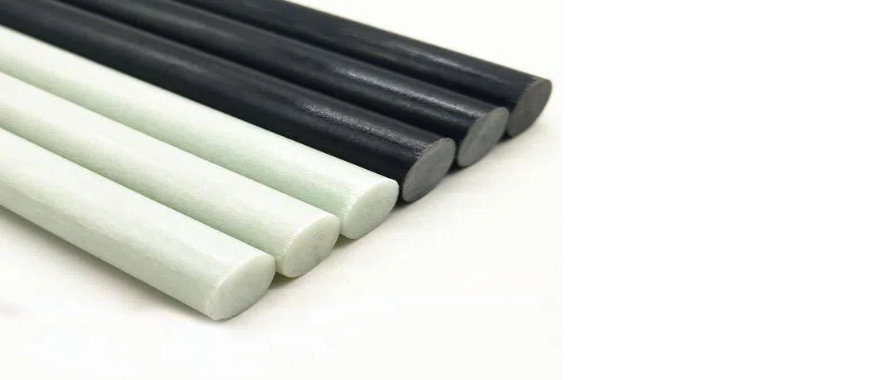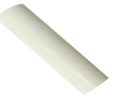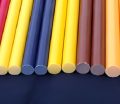
Ultralight fiberglass fly rods have gained increasing popularity among fly fishing enthusiasts, particularly in both freshwater and saltwater environments. These rods are celebrated for their smooth casting abilities and flexibility, making them ideal for delicate presentations and small fish species. Anglers praise their durability and retro aesthetic, which stands apart from modern graphite rods. Among the noteworthy options available in the market, GangLong Fiberglass fly rods have become a popular choice for those seeking quality ultralight fiberglass fly rods for their fishing adventures.
What Are Ultralight Fiberglass Fly Rods?
Historical Context
Ultralight fiberglass fly rods emerged as a popular option for anglers after World War II. Before this period, bamboo rods dominated the fishing world. However, the introduction of fiberglass provided anglers with a lighter, more durable alternative. During the 1950s and 1960s, fiberglass rods began to replace bamboo, leading the fishing industry until graphite rods became more widely available in the 1970s. Despite the growing popularity of graphite, fiberglass rods, especially ultralight versions, have maintained a loyal following among traditionalists and those seeking a unique fishing experience.
Technical Details
The construction of ultralight fiberglass fly rods involves weaving fine strands of glass into a lightweight, flexible material. This process results in rods that are not only lighter but also more flexible compared to graphite. The lightweight nature of these rods is perfect for ultralight fishing applications, where precision and gentle casts are essential. Fiberglass’s inherent flexibility makes it ideal for handling small fish and delicate flies, offering a unique casting rhythm that many anglers appreciate. The rod’s ability to bend more than graphite allows for smoother casts, enhancing the overall fishing experience.
How Well Does Fiberglass Rod Hold Thread Successfully
Advantages of Ultralight Fiberglass Fly Rods
Delicate Presentations and Precise Casts
Ultralight fiberglass fly rods excel in providing delicate presentations and precise casts, making them ideal for dry flies in small streams or calm waters. Their flexibility allows for a slower casting rhythm, which results in a softer landing of the fly, reducing the chance of spooking fish. This control is particularly beneficial for anglers targeting smaller fish species that require subtle casting techniques.
Lighter Tippet Protection
Ultralight fiberglass fly rods offer superior protection for lighter tippets, which is essential when fishing for species that demand finesse. The flexibility of fiberglass fly rod’s ensures that tippets do not snap easily, providing a balance between sensitivity and strength. This feature allows anglers to fish with lighter lines without compromising on the power needed to land fish.
Fluid and Fun Casting Experience
One of the standout qualities of ultralight fiberglass fly rods is their unique casting experience. Anglers often describe the process as fluid, fun, and highly engaging. The slower action of these rods creates a more relaxed pace, enhancing the overall enjoyment of fishing. This distinct feel sets fiberglass rods apart from their graphite counterparts, offering a nostalgic and fulfilling experience on the water.
Adaptable to Freshwater and Saltwater
Ultralight fiberglass fly rods are versatile enough to be used in both freshwater and saltwater environments. Their durability and resistance to corrosion make them well-suited for saltwater fishing, while their lightweight design allows for precision in freshwater conditions. Whether targeting trout in mountain streams or casting for small saltwater species, these rods are a reliable choice for anglers in various settings.
Why the Best Fiberglass Rods Are Essential for Anglers
Disadvantages of Ultralight Fiberglass Fly Rods
Wind Resistance and Handling Larger Flies
One of the main drawbacks of ultralight fiberglass fly rods is their struggle with wind resistance, particularly in open or coastal environments. Due to their slower action and increased flexibility, casting larger flies in windy conditions can be challenging. This issue becomes more noticeable in saltwater fishing, where heavier and bulkier flies are often required to attract fish. Anglers may find it difficult to maintain precision when casting into strong winds, which limits the use of these rods in certain environments.
Less Power for Fighting Larger Fish
While ultralight fiberglass fly rods excel in handling small to medium-sized fish, they are less effective when it comes to fighting larger, stronger species. The softer, more flexible property of fiberglass rods means they lack the power and rigidity of graphite rods, making it harder to control and land larger fish. For anglers targeting big game species, especially in saltwater, ultralight fiberglass fishing rods may not provide enough strength for long battles.
Limited Availability
Ultralight fiberglass fly rods are not as widely available as their graphite counterparts. This limited range of options can make it harder for anglers to find the perfect rod for their needs. Despite the increasing popularity, fiberglass rod selections remain niche, and not all fishing stores or manufacturers carry a wide variety.
How to Fish with Ultralight Fiberglass Fly Rods
Choosing the Right Rod
When selecting ultralight fiberglass fly rods, it’s essential to choose a model that matches your fishing style and environment. These rods are well-suited for small streams, gentle rivers, and other scenarios where a delicate approach is needed. It’s important to research and read reviews to find the ideal rod for your specific fishing conditions.
Selecting the Ideal Conditions
Ultralight fiberglass fly rods are perfect for certain conditions, especially in calm or shallow waters. When fish are skittish, and a subtle presentation is necessary, these rods shine. Their ability to handle light tippets makes them excellent for fishing smaller species without spooking them. In contrast, in fast currents or windy conditions, heavier or graphite rods might be more suitable due to their increased power and wind resistance. Knowing when to choose fiberglass over other materials will maximize your chances of success.
Mastering the Casting Stroke
To fish effectively with ultralight fiberglass fly rods, mastering the casting stroke is crucial. These rods have a full-flex action, meaning they bend deeply throughout the rod’s length. Anglers should adopt a slower, more deliberate casting stroke to take advantage of this unique feature. By allowing the rod to load fully, you can achieve smooth, accurate casts with minimal effort. This casting style not only enhances performance but also makes fishing with fiberglass fly rods an enjoyable, fluid experience.
Best Fiberglass Hot Rod Bodies For Custom Car Building Projects
The Joy of Fishing with Ultralight Fiberglass Fly Rods
Choosing ultralight fiberglass fly rods is much like opting for film photography or traditional archery. While digital cameras and compound bows might be more efficient, the nostalgic and immersive experience of using older techniques often outweighs pure practicality. Similarly, ultralight fiberglass fly rods may not always be the best choice for windy days or large fish, but they offer an experience that resonates deeply with many anglers.
The tactile feedback and slower casting rhythm create a rewarding, almost meditative fishing experience. Some Fiberglass fly rod brands like GangLong Fiberglass provide rods that capture this spirit, offering anglers an opportunity to connect with the sport in a unique way. For those who appreciate the process as much as the outcome, these rods are an excellent choice. Whether fishing in a calm stream or along a quiet shoreline, the enjoyment of using fiberglass rods adds a special quality to every cast.
FAQs about Ultralight Fiberglass Fly Rods
Fiberglass fly rods are best used in specific fishing conditions. These rods excel in small streams, calm rivers, or shallow waters where precision and delicate presentation are key. When targeting smaller fish species or when using light tippets, a fiberglass rod is the ideal choice. Additionally, anglers who appreciate a slower, more relaxed casting rhythm often prefer fiberglass. Their flexibility allows for smoother, controlled casts, especially when trying to avoid spooking fish. For those who enjoy a nostalgic feel and more tactile feedback during their fishing experience, fiberglass fly rods provide an unmatched connection with the rod and the water. However, in windy conditions or when dealing with larger fish, you might want to consider a graphite rod for its added strength and power.
The choice between graphite and fiberglass depends on the angler’s preference and fishing environment. Graphite fly rods are lighter, stiffer, and more powerful, making them ideal for long casts, windy conditions, or fighting larger fish. They offer faster action, which allows for more precise casting in a variety of situations. On the other hand, fiberglass fly rods are more flexible and offer a slower, more forgiving action. This makes them better suited for delicate presentations, especially in smaller bodies of water. While graphite is preferred for speed and power, fiberglass excels in offering a relaxed, enjoyable casting experience. Ultimately, both materials have their strengths, and choosing the right one depends on what you prioritize in your fishing outings.
Fiberglass fishing rods are perfect for situations that require flexibility and sensitivity. They are ideal for fishing in small streams or calm waters, where gentle presentations are essential. These rods excel in targeting smaller species like trout or panfish, offering a smooth, controlled cast. The full-flex nature of fiberglass rods allows them to absorb the shock of fighting fish, which is particularly useful when using lighter lines. Additionally, fiberglass rods are highly durable, making them a long-lasting option for anglers who appreciate a classic, tactile fishing experience. They may not be the best for large fish or windy conditions, but for those seeking a unique and enjoyable fishing experience, fiberglass rods are a fantastic choice.
Yes, fiberglass rods can absolutely be used with tackle, including flies, lures, and bait. Fiberglass rods are versatile and capable of handling a wide range of tackle setups, though they are most commonly associated with fly fishing. When using lighter tackle, fiberglass rods offer excellent sensitivity, allowing anglers to feel subtle bites and movements in the water. They are also flexible enough to protect lighter tippets and lines when reeling in fish. While heavier tackle is typically better suited for stiffer rods like graphite, fiberglass rods can still manage lighter to medium-weight tackle without any issues. Their flexibility ensures that even when fighting fish, the tackle remains secure and effective.

As the editor of GangLong Fiberglass, I have years of experience and in-depth research, focusing on cable tray products, fiberglass solutions, and grille systems. I incorporate years of industry insights and practical experience into every content, committed to promoting the progress of the industry. At GangLong Fiberglass, my commitment is reflected in every product, from innovative cable trays to durable fiberglass solutions and sturdy grille systems. As an authoritative voice in the industry, my goal is to provide valuable information to professionals and businesses and promote forward-looking solutions.


